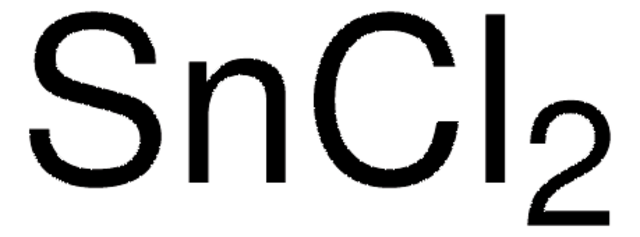Kluczowe dokumenty
467901
Nickel(II) sulfate hexahydrate
≥99.99% trace metals basis
About This Item
Polecane produkty
klasa czystości
for inorganic trace analysis
Poziom jakości
gęstość pary
2.07 (vs air)
Próba
≥99.99% trace metals basis
Formularz
solid
zanieczyszczenia
≤0.002% N compounds
≤0.005% insolubles
<100 ppm total metallic impurities
ślady anionów
chloride (Cl-): ≤0.001%
ślady kationów
Ca: ≤0.005%
Co: ≤0.002%
Cu: ≤0.005%
Fe: ≤0.001%
K: ≤0.01%
Mg: ≤0.005%
Mn: ≤0.002%
Na: ≤0.05%
ciąg SMILES
O.O.O.O.O.O.[Ni++].[O-]S([O-])(=O)=O
InChI
1S/Ni.H2O4S.6H2O/c;1-5(2,3)4;;;;;;/h;(H2,1,2,3,4);6*1H2/q+2;;;;;;;/p-2
Klucz InChI
RRIWRJBSCGCBID-UHFFFAOYSA-L
Szukasz podobnych produktów? Odwiedź Przewodnik dotyczący porównywania produktów
Opis ogólny
Zastosowanie
- Improvement of ion chromatography with ultraviolet photometric detection and comparison with conductivity detection for the determination of serum cations.: This study explores advanced ion chromatography techniques for analyzing serum cations, where Nickel(II) sulfate hexahydrate may be used as a standard or in method development. The research compares ultraviolet photometric detection with conductivity detection, enhancing analytical methods for precise cation analysis in various samples, which can be crucial for environmental and clinical chemistry (Shintani H, 1985).
Hasło ostrzegawcze
Danger
Zwroty wskazujące rodzaj zagrożenia
Zwroty wskazujące środki ostrożności
Klasyfikacja zagrożeń
Acute Tox. 4 Inhalation - Acute Tox. 4 Oral - Aquatic Acute 1 - Aquatic Chronic 1 - Carc. 1A Inhalation - Muta. 2 - Repr. 1B - Resp. Sens. 1 - Skin Irrit. 2 - Skin Sens. 1 - STOT RE 1 Inhalation
Organy docelowe
Respiratory Tract
Kod klasy składowania
6.1D - Non-combustible acute toxic Cat.3 / toxic hazardous materials or hazardous materials causing chronic effects
Klasa zagrożenia wodnego (WGK)
WGK 3
Temperatura zapłonu (°F)
Not applicable
Temperatura zapłonu (°C)
Not applicable
Wybierz jedną z najnowszych wersji:
Masz już ten produkt?
Dokumenty związane z niedawno zakupionymi produktami zostały zamieszczone w Bibliotece dokumentów.
Klienci oglądali również te produkty
Nasz zespół naukowców ma doświadczenie we wszystkich obszarach badań, w tym w naukach przyrodniczych, materiałoznawstwie, syntezie chemicznej, chromatografii, analityce i wielu innych dziedzinach.
Skontaktuj się z zespołem ds. pomocy technicznej












